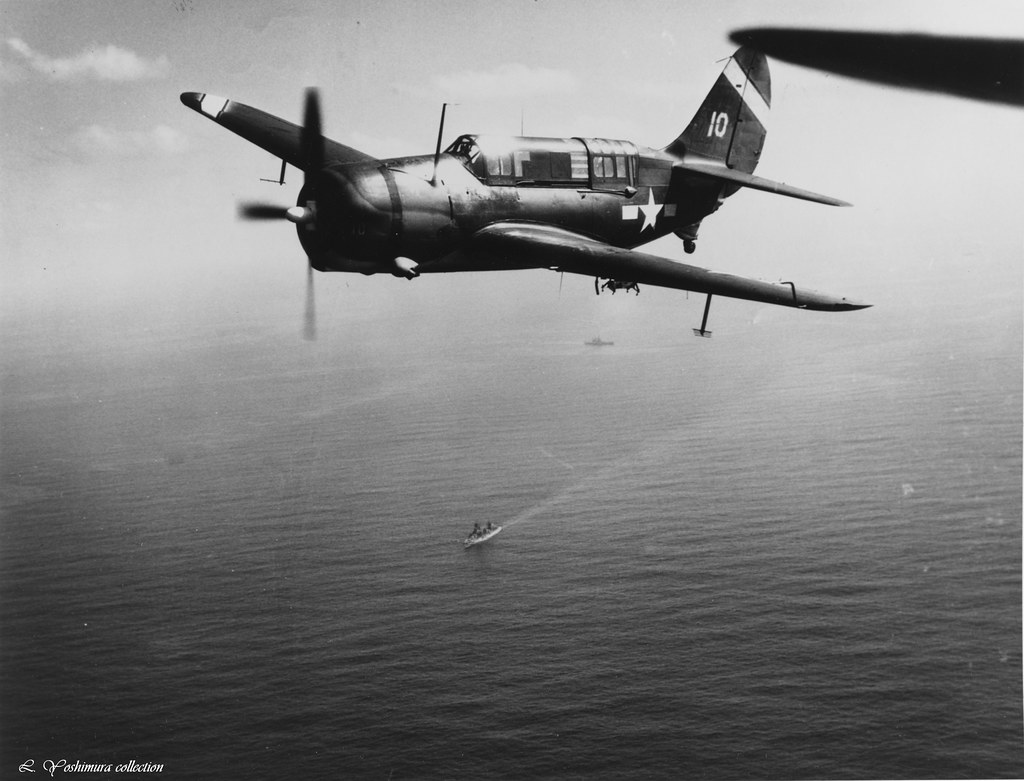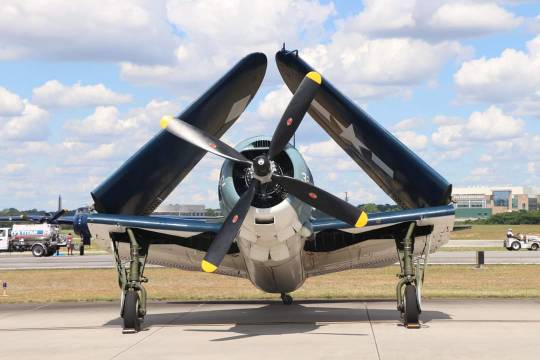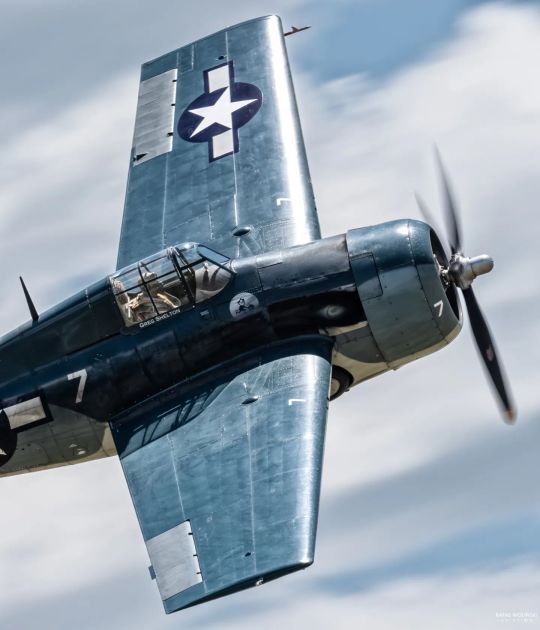#curtiss sb2c helldiver
Text
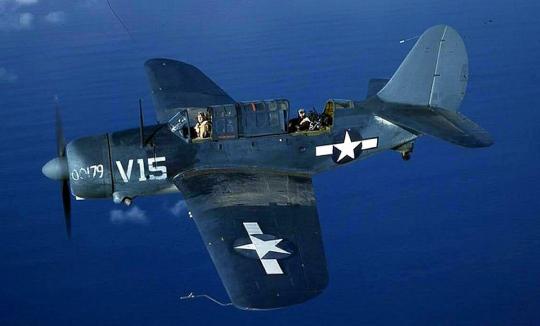
Bombardier en piqué Curtiss SB2C Helldiver – 1943-1945
©United States Navy
#WWII#marine américaine#us navy#aviation militaire#military aviation#bombardier#bomber#bombardier en piqué#dive bomber#curtiss sb2c helldiver#sb2c helldiver#helldiver#1943#1944#1945
125 notes
·
View notes
Photo

Sea Wolf with fangs of fire!
#ww2#wwii era#wwii history#wwii#curtiss helldiver#curtiss sb2c helldiver#u.s. navy#carrier aircraft#u.s. marine corps#naval aviators#oldsmobile#gm#general motors
97 notes
·
View notes
Text
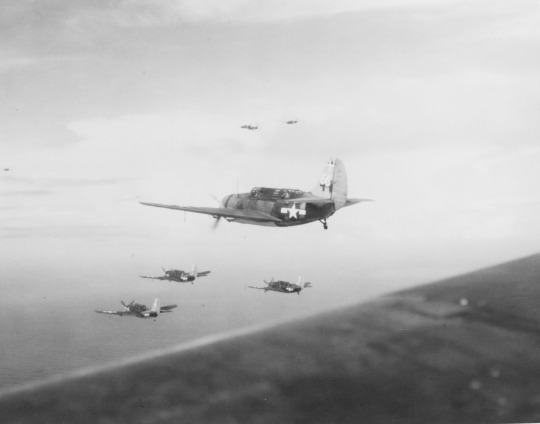
Curtiss SB2C-3 Helldivers of VB-18, assigned to USS Intrepid (CV-11), on patrol over the Philippine Sea, on November 15, 1944.
Note crudely repainted markings on tails.
NHHC: 80-G-K-2222
#Curtiss SB2C Helldiver#dive bomber#USS Intrepid (CV-11)#USS Intrepid#Essex Class#Aircraft Carrier#November#Philippine Sea#1944#world war 2#world war ii#WWII#WW2#WWII History#History#united states navy#us navy#navy#usn#u.s. navy#my post
198 notes
·
View notes
Text



Naval Review of Fleets in Virginia, circa June 1957.
Photographed by Frank Scherschel for LIFE Magazine.
LIFE Magazine Archives: 113691409, 113691414, 113691413
#Vought F7U Cutlass#F7U#North American FJ-1 Fury#FJ-1#Vought V-173 Flying Pancake#Vought V-173#V-173#Grumman C-1 Trader#C-1#North American AJ Savage#North American A-2 Savage#AJ#A-2#Ryan FR Fireball#FR#Douglas BTD Destroyer#BTD#Curtiss SB2C Helldiver#Grumman F9F Panther#F9F#Douglas A-3 Skywarrior#A-3#Douglas F3D Skyknight#Douglas F-10 Skyknight#F-10#Grumman AF Guardian#AF#Grumman F6F Hellcat#F6F#North American T-6 Texan
23 notes
·
View notes
Video
WWII by Linh Yoshimura
Via Flickr:
Iwo Jima Operation, 1945 - Curtiss SB2C-3 Helldiver bomber from USS Hancock (CV-19) flies over two battleships of the invasion fleet, during strikes on Iwo Jima on 19 February 1945. US National Archives Photo.
19 notes
·
View notes
Text

A Helldiver watching the sunset at Ellington Field
#Curtiss#SB2C#Helldiver#Dive Bomber#Bomber#aviation photography#WW2 bomber#airplane#plane#vintage aircraft
58 notes
·
View notes
Text

Curtiss SB2C-3 Helldiver over USS Hornet. January 1945
➤➤ TRAINING VIDEO: https://youtu.be/InaZUZjkrXc
#youtube#aircraft#airplane#aviation#dronescapes#military#ww2#wwii#documentary#aviation history#how to fly#training#Curtiss#Curtiss Helldiver#helldivers#Helldiver#Hornet#uss hornet#Aircraft Carrier#colorized#circa 1945#ww2 aircraft#ww2 history#world war ii#world war 2#second world war#wwii history#ww2 pilot#ww2 bomber#wwii airplane
175 notes
·
View notes
Video
Curtiss SB2C-4 Helldiver by Willard Womack
Via Flickr:
Looks like a new SB2C in a publicity shot, with an attractive young woman.
151 notes
·
View notes
Photo

Un bombardier en piqué Curtiss SB2C-5 Helldiver du 10e Escadron de bombardement (VB-10) assigné au porte-avions USS Intrepid (CV-11) au-dessus de Tientsin (Tianjin) alors que la cité est réoccupée par les alliés – Chine – 5 septembre 1945
Photographe : Official U.S. Navy Photograph
©Naval History and Heritage Command - 80-G-348290
Ce jour-là, l'USS Intrepid lança 86 avions pour une démonstration de force pendant la démobilisation des forces japonaises dans le secteur.
#WWII#Guerre Sino-japonaise#Second Sino-Japanese War#Armée de l'Air américaine#United States Army Air Forces#USAAF#10e Escadron de bombardement (VB-10) US#10th Bombing squadron (VB-10) US#USS Intrepid (CV-11)#CV-11#Bombardier en piqué#Dive bomber#Bombardier en piqué embarqué#Carrier-based dive bomber#Curtiss SB2C Helldiver#Tientsin#Tianjin#Chine#China#05/09/1945#09/1945#1945
23 notes
·
View notes
Text
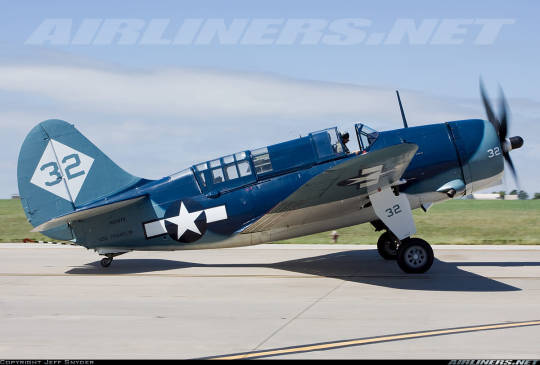
Curtiss SB2C-5 Helldiver
The Helldiver was developed to replace the Douglas SBD Dauntless. It was a much larger aircraft, able to operate from the latest aircraft carriers and carry a considerable array of armament. It featured an internal bomb bay that reduced drag when carrying heavy ordnance. Saddled with demanding requirements set forth by both the U.S. Marines and United States Army Air Forces, the manufacturer incorporated features of a "multi-role" aircraft into the design.
The Model XSB2C-1 prototype initially suffered development issues connected to its Wright R-2600 Twin Cyclone engine and three-bladed propeller; further concerns included structural weaknesses, poor handling, directional instability, and bad stall characteristics. In 1939, a student took a model of the new Curtiss XSB2C-1 to the MIT wind tunnel. Professor of Aeronautical Engineering Otto C. Koppen was quoted as saying, "if they build more than one of these, they are crazy". He was referring to controllability issues with the small vertical tail.
The first prototype made its maiden flight on 18 December 1940. It crashed on 8 February 1941 when its engine failed on approach, but Curtiss was asked to rebuild it. The fuselage was lengthened and a larger tail was fitted, while an autopilot was fitted to help the poor stability. The revised prototype flew again on 20 October 1941, but was destroyed when its wing failed during diving tests on 21 December 1941.
Large-scale production had already been ordered on 29 November 1940, but a large number of modifications were specified for the production model. Fin and rudder area were increased, fuel capacity was increased, self-sealing fuel tanks were added, and the fixed armament was doubled to four 0.50 in (12.7 mm) machine guns in the wings, compared with the prototype's two cowling guns. The SB2C-1 was built with larger fuel tanks, improving its range considerably.
The program suffered so many delays that the Grumman TBF Avenger entered service before the Helldiver, even though the Avenger had begun its development two years later. Nevertheless, production tempo accelerated with production at Columbus, Ohio and two Canadian factories: Fairchild Aircraft Ltd. (Canada), which produced 300 (under the designations XSBF-l, SBF-l, SBF-3, and SBF-4E), and Canadian Car and Foundry, which built 894 (designated SBW-l, SBW-3, SBW-4, SBW-4E, and SBW-5), these models being respectively equivalent to their Curtiss-built counterparts. A total of 7,140 SB2Cs and equivalent models were produced in World War II.
Initially poor handling characteristics and late modifications caused lengthy delays to production and deployment, to the extent that it was investigated by the Truman Committee, which turned in a scathing report. This contributed to the decline of Curtiss as a company. Neither pilots nor aircraft carrier skippers seemed to like it. Nevertheless, the type was faster than the Dauntless, and by the end of the Pacific War, the Helldiver had become the main dive bomber and attack aircraft on USN carriers.
By the time a land-based variant, known as the A-25 Shrike, became available in late 1943, the Western Allied air forces had abandoned dedicated dive-bombers. A majority of A-25s delivered to the US Army Air Forces were transferred to the US Marine Corps, which used the type only in one side campaign and non-combat roles. The British Royal Navy and the Royal Australian Air Force also cancelled substantial orders, retaining only a few aircraft for research purposes.
Nicknames for the aircraft included "Big-Tailed Beast" or just "Beast", "Two-Cee", and "Son-of-a-Bitch 2nd Class"; the latter nickname was derived from the name SB2C and the aircraft's reputation for having difficult handling characteristics.
Photo-Description:
Aircraft
Commemorative Air Force
Curtiss SB2C-5 Helldiver
Reg.: N92879
Code: 32
Location & Date
Wichita - McConnell AFB (IAB / KIAB)
Kansas, USA - September 25, 2010
Caption:
Photographer:
J Snyder (Oklahoma, USA)
16 notes
·
View notes
Text
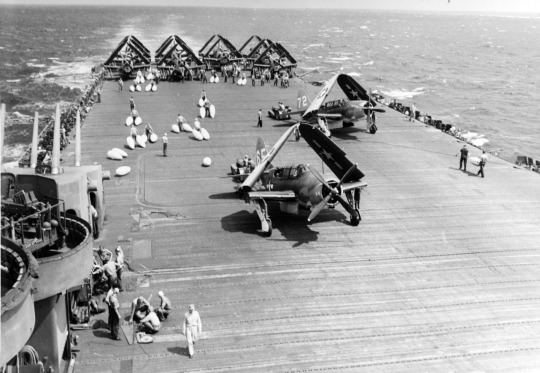
Loading drop tanks on Curtiss SB2C Helldivers aboard USS Lexington (CV-16) before a search mission.
Date: October 25, 1944
NHHC: 80-G-284381
#USS Lexington (CV-16)#USS Lexington#Essex Class#Aircraft Carrier#Carrier#Warship#Ship#United States Navy#U.S. Navy#US Navy#USN#Navy#World War II#World War 2#WWII#WW2#WWII History#History#Military History#Battle of the Sibuyan Sea#Battle of Leyte Gulf#Tablas Strait#Philippines#Philippines campaign#Pacific Theater#October#1944#Curtiss SB2C Helldiver#Dive bomber#my post
84 notes
·
View notes
Text
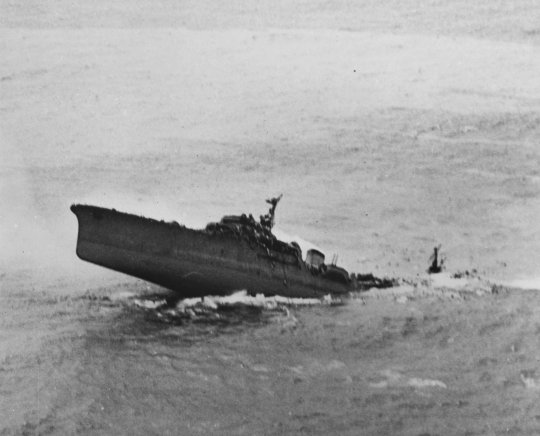
The Japanese cruiser Kashii sinking off the coast of French Indochina after an attack by U.S. Navy carrier aircraft, 12 January 1945.
The ship was underway with convoy HI-86 which consisted of 16 ships (four tankers, six cargo ships and six escorts). On 12 January 1945, shortly after departing Qui Nhon Bay, Indochina, bombers from the U.S. Task Force 38 comprising the aircraft carriers Lexington, Hornet, Hancock, Essex, Ticonderoga, Langley and San Jacinto attacked the convoy during the South China Sea raid, sinking most of the convoy's ships.
Kashii was hit starboard amidships by a torpedo from a Grumman TBF Avenger, then a Curtiss SB2C Helldiver struck with two bombs aft, setting off the depth charge magazine.
Of Kashii's crew, 621 men went down with the ship and only 19 were rescued.
3 notes
·
View notes
Text

Restored Curtiss SB2C Helldiver
@ron_eisele via X
25 notes
·
View notes
Photo
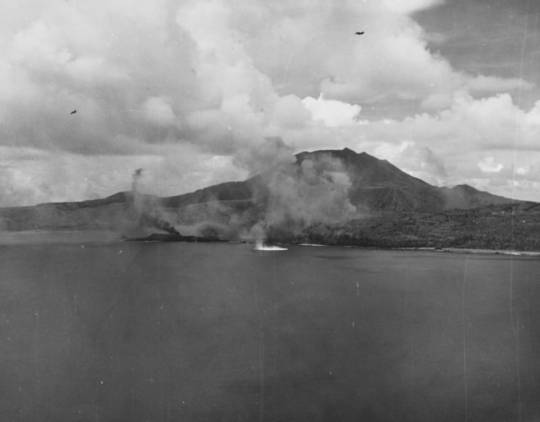
U.S. Navy aircraft from Task Force 58, including 2 Curtiss SB2C "Helldivers", during the raid on Pagan Island. 23 June 1944
9 notes
·
View notes
